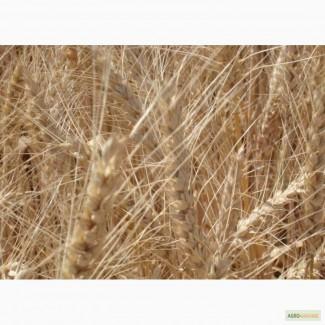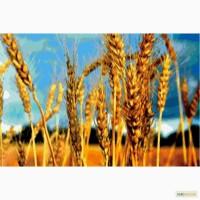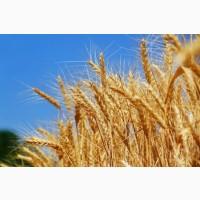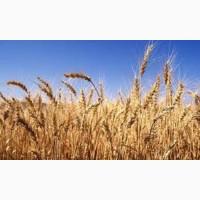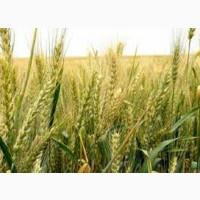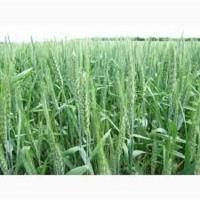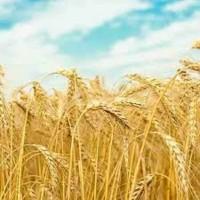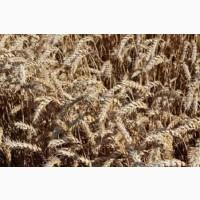For sale / buy
Winter wheat Odesskaya 267 elite and 1 repr, Donetsk region.| ||124
Регион: all of Ukraine,
Donetsk region.
(Mariupol)
Grain purpose: Food grain
Odesskaya winter wheat for sale 267
In the Register of plant varieties of Ukraine since 1997
Authors: D. A. Dolgushyn, P. E. Shestopalova, A. M. Heifets and others.
Economic and biological characteristics:
— Over the years of competitive variety testing, the average yield was 6.67 t/ha (6.90 t/ha for the Selyanka standard). It is characterized by high environmental plasticity, increased competitiveness against weeds;(//tractor-service.com)
— Medium-ripe, ripens later than Peasants for 2-3 days. The need for vernalization is average, the sensitivity to photoperiodism is increased;
— High frost and drought resistance. Heat resistance at the level of standards for the steppe zone; 150
— Устойчив к желтой ржавчине (6-7 баллов), септориозу (6-7 баллов), слабо поражается пыльной головней (5 баллов), средне — мучнистой росой (4 балла), твердой головней (3-4 балла), фузариозом колоса (3-4 балла), сильно — бурой ржавчиной (1-3 балла);
— High resistance to root sprouting and shedding, average resistance to lying down.
Grain quality: belongs to the group of strong wheat varieties. Flour strength is 280-350 EA, gluten content is 28-30%, protein content is 13.0-13.9%, bread volume from 100 g of flour is 1480 cm3. The overall rating of bread is 4.8 points.
Approbation signs: a variety of erythrospermum. Medium-sized (110-120 cm). The spike is spindle-shaped, long (9-10 cm), dense (23 spikes / 10 cm of stem). After ripening, the ear and stem are white. Spikelet scale lanceolate-elongated, with well-expressed nervation. The spike of spikelet scale is straight, short (1.7-2.0 mm). The shoulder is narrow, sloping. The keel is well defined, reaches the base of the scales. Awns of medium length, do not exceed the length of the ear, diverge to the sides, dense.Grain red, large (weight of 1000 grains 38.0-42.8 g), egg-shaped, shallow furrow. Leaves of medium size, not pubescent. Productive bushiness is high.
Agrotechnical requirements: one of the least demanding varieties for growing conditions, so it is recommended for the worst predecessors. The negative reaction to early and late autumn sowing times is less pronounced, compared to other varieties. It effectively covers the costs of the mainnitrogen fertilizers and fertilizing in dry years. When applying N 80-100 kg/ha, the increase in grain yield is 0.3-0.4 t/ha; the protein content increases by 1.2-1.8%; flour strength of 80-150 e. a. In years with an increased amount of precipitation, an increase in the dose of fertilizing (N 90-120 kg / ha) can lead to the laying of plants. announced in the "Wheat" section
In the Register of plant varieties of Ukraine since 1997
Authors: D. A. Dolgushyn, P. E. Shestopalova, A. M. Heifets and others.
Economic and biological characteristics:
— Over the years of competitive variety testing, the average yield was 6.67 t/ha (6.90 t/ha for the Selyanka standard). It is characterized by high environmental plasticity, increased competitiveness against weeds;(//tractor-service.com)
— Medium-ripe, ripens later than Peasants for 2-3 days. The need for vernalization is average, the sensitivity to photoperiodism is increased;
— High frost and drought resistance. Heat resistance at the level of standards for the steppe zone; 150
— Устойчив к желтой ржавчине (6-7 баллов), септориозу (6-7 баллов), слабо поражается пыльной головней (5 баллов), средне — мучнистой росой (4 балла), твердой головней (3-4 балла), фузариозом колоса (3-4 балла), сильно — бурой ржавчиной (1-3 балла);
— High resistance to root sprouting and shedding, average resistance to lying down.
Grain quality: belongs to the group of strong wheat varieties. Flour strength is 280-350 EA, gluten content is 28-30%, protein content is 13.0-13.9%, bread volume from 100 g of flour is 1480 cm3. The overall rating of bread is 4.8 points.
Approbation signs: a variety of erythrospermum. Medium-sized (110-120 cm). The spike is spindle-shaped, long (9-10 cm), dense (23 spikes / 10 cm of stem). After ripening, the ear and stem are white. Spikelet scale lanceolate-elongated, with well-expressed nervation. The spike of spikelet scale is straight, short (1.7-2.0 mm). The shoulder is narrow, sloping. The keel is well defined, reaches the base of the scales. Awns of medium length, do not exceed the length of the ear, diverge to the sides, dense.Grain red, large (weight of 1000 grains 38.0-42.8 g), egg-shaped, shallow furrow. Leaves of medium size, not pubescent. Productive bushiness is high.
Agrotechnical requirements: one of the least demanding varieties for growing conditions, so it is recommended for the worst predecessors. The negative reaction to early and late autumn sowing times is less pronounced, compared to other varieties. It effectively covers the costs of the mainnitrogen fertilizers and fertilizing in dry years. When applying N 80-100 kg/ha, the increase in grain yield is 0.3-0.4 t/ha; the protein content increases by 1.2-1.8%; flour strength of 80-150 e. a. In years with an increased amount of precipitation, an increase in the dose of fertilizing (N 90-120 kg / ha) can lead to the laying of plants. announced in the "Wheat" section
Advertisement ID: #693491
(added by a registered user)
Permanent ad address:
Showed / watched for today: ?, total: ?
